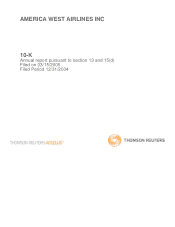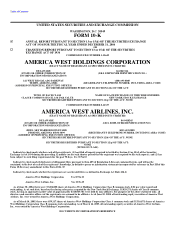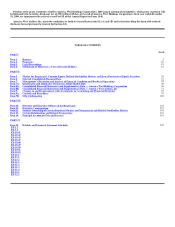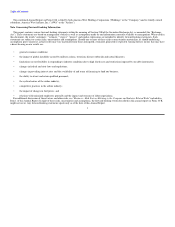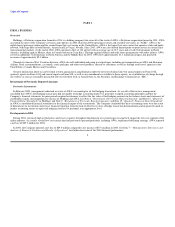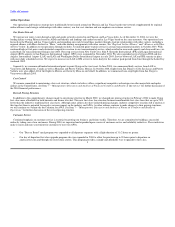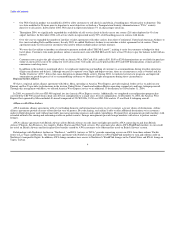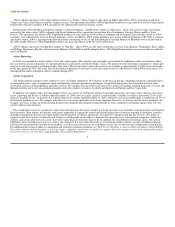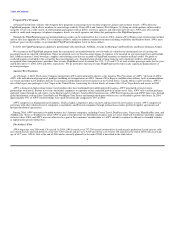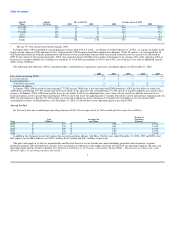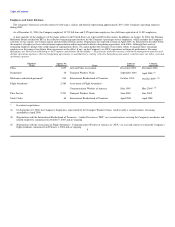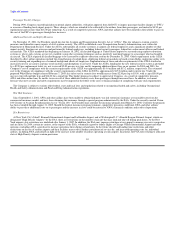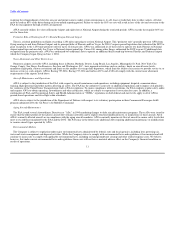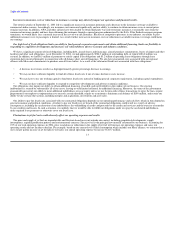US Airways 2004 Annual Report Download - page 6
Download and view the complete annual report
Please find page 6 of the 2004 US Airways annual report below. You can navigate through the pages in the report by either clicking on the pages listed below, or by using the keyword search tool below to find specific information within the annual report.
Table of Contents
Airline Operations
Our operations and business strategy have traditionally been focused around our Phoenix and Las Vegas based route-network (supplemented by regional
airline alliances and strategic relationships with other carriers), our low cost structure and our emphasis on customer service.
Our Route Network
We operate our route system through a hub-and-spoke network centered in our Phoenix and Las Vegas hubs. As of December 31, 2004, we were the
leading airline serving Phoenix based on ASMs and takeoffs and landings and ranked second in Las Vegas based on the same measures. Our operations have
focused on the Phoenix and Las Vegas markets and expanding our reach beyond those markets through strategic relationships with other carriers, including a
regional alliance with Mesa Airlines or "Mesa," and code-sharing arrangements with other carriers. See "Regional Airline Alliance" and "Alliances with Other
Airlines" below. In addition to our operations through our hubs, we initiated point-to-point service in certain transcontinental markets in October 2003. With
continued high jet fuel prices and substantial competitive reaction to our transcontinental service, which resulted in increased capacity and decreased fares, we
scaled back our transcontinental flying in late 2004. Non-stop services from New York City's John F. Kennedy International (JFK) and Logan International
Airport (BOS) airports to San Francisco International Airport (SFO) were suspended in November 2004. We also suspended service between BOS and Los
Angeles International Airport (LAX) and LAX and Washington Dulles International Airport in early 2005. Service between LAX and JFK remains in place
with once daily scheduled service. We expect to increase our LAX to JFK service to twice-daily for the summer peak period from June through the Labor Day
weekend, 2005.
Separately, we commenced limited international point-to-point flying on the west coast. In June 2004, we commenced daily services from LAX to
Vancouver and Edmonton, Canada as well as Mazatlan and Puerto Vallarta, Mexico. In October 2004, flights from San Diego to Cabo San Lucas and Puerto
Vallarta were also added. All of the flights to Mexico are flown by Mesa on our behalf. In addition, we commenced non-stop flights from San Diego to
Vancouver in March 2005.
Cost Control
We remain committed to maintaining a low cost structure, which we believe offers a significant competitive advantage over other major hub-and-spoke
airlines in the United States. See Item 7 – "Management's Discussion and Analysis of Financial Condition and Results of Operations" for further discussion of
the 2004 financial performance.
Revised Pricing Structure
In addition to the comprehensive changes made to our pricing structure in March 2002, we changed our pricing structure in February 2004 to make flying
first class more affordable for both business and leisure travelers. This new first class fare structure features nonrefundable first class fares that are up to 70%
lower than the industry's traditional first class fares. Although some airlines also have initiated pricing changes, industry competitive reaction still is unclear at
this time but there is potential for negative revenue impact on the industry and AWA. As other airlines continue to make changes to their pricing structures,
we will continue to evaluate the best solution for AWA. See Item 7 – "Management's Discussion and Analysis of Financial Condition and Results of
Operations" for further discussion of the revised pricing structure.
Customer Service
Continued emphasis on customer service is essential to growing our business and leisure traffic. Therefore, we are committed to building a successful
airline by taking care of our customers. During 2004, we improved and expanded upon a series of customer service and reliability initiatives. These initiatives
make it easier and more convenient for customers to travel on AWA.
• Our "Buy on Board" meal program was expanded to all departure segments with a flight duration of 3 1/2 hours or greater.
• Our day of departure first class upgrade program also was expanded in 2004 to allow for purchase up to 24 hours prior to departure on
americawest.com and through our reservation centers. This program provides a simple and affordable way to upgrade to first class.
3

